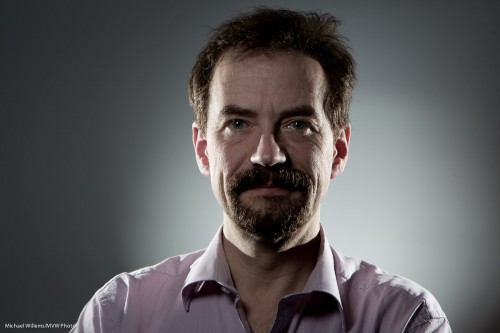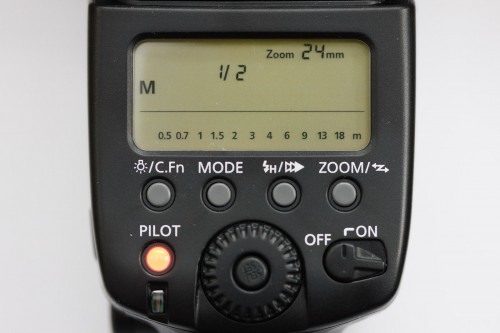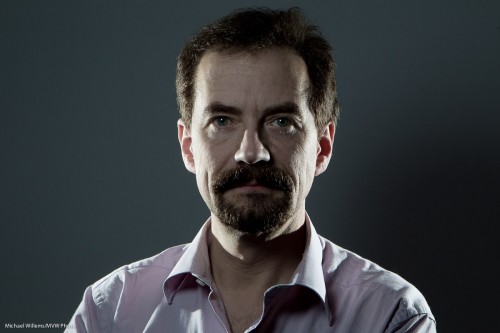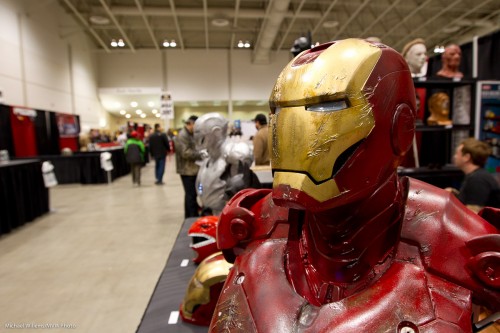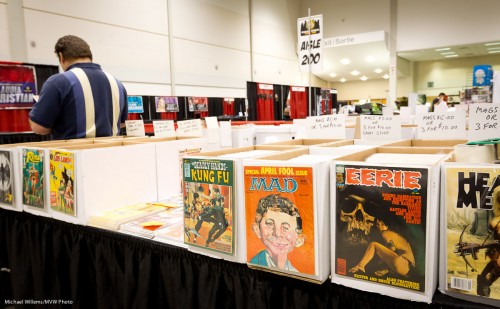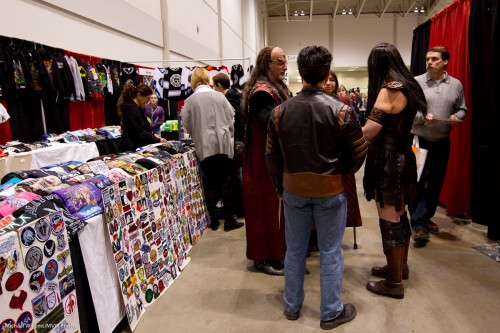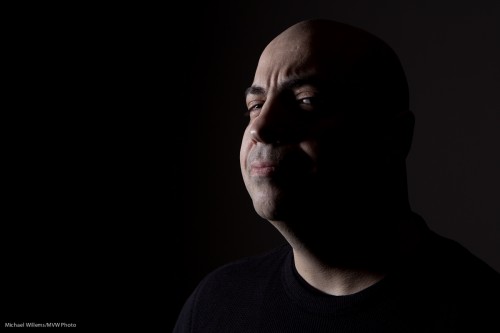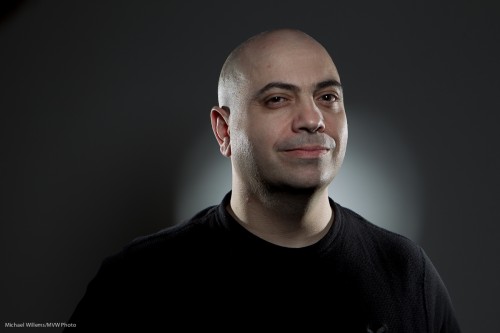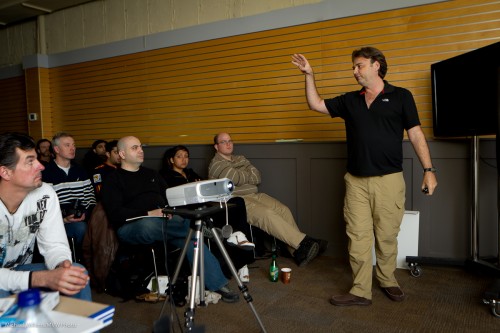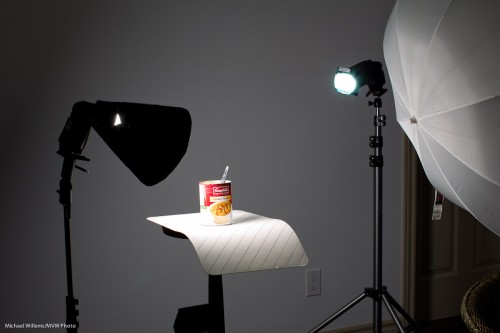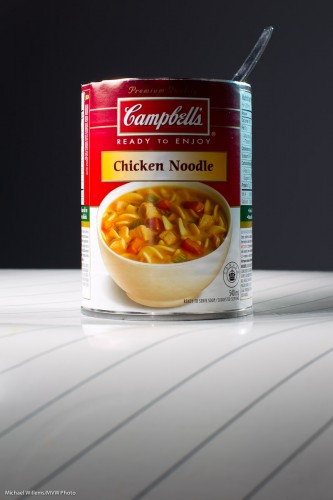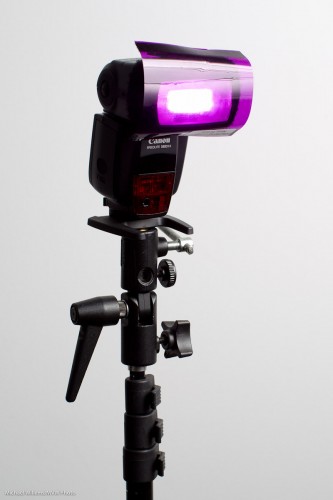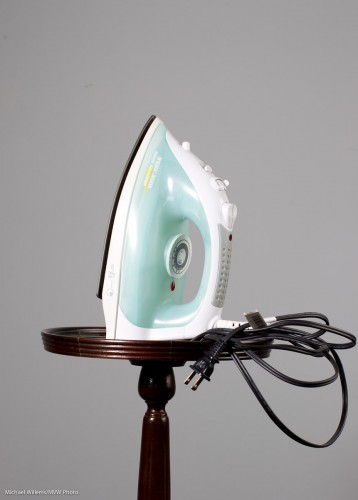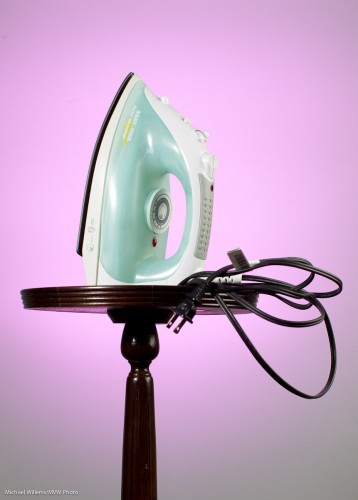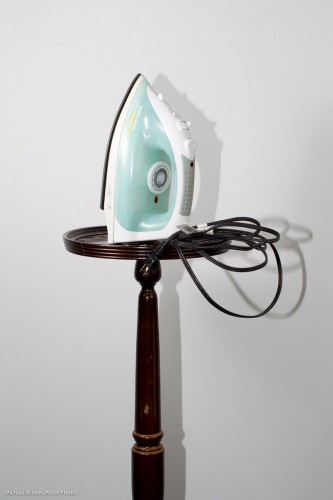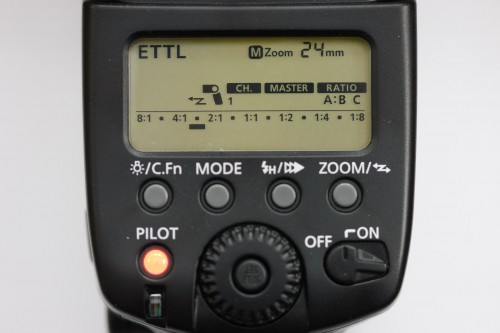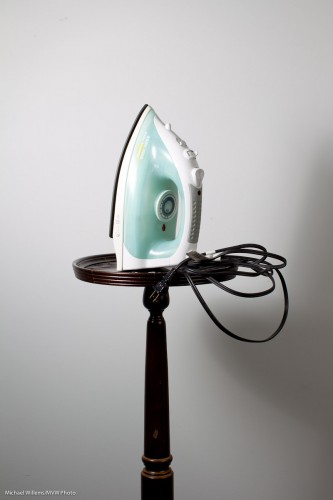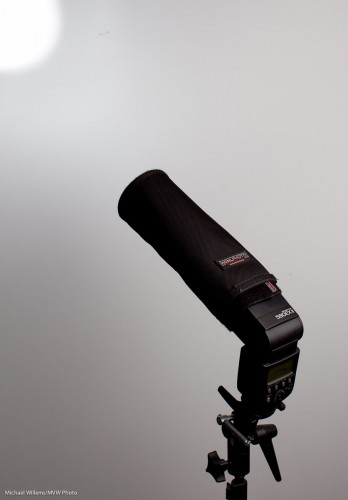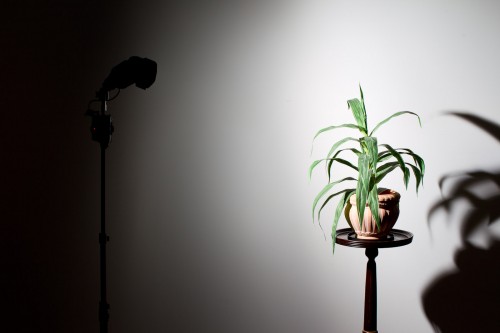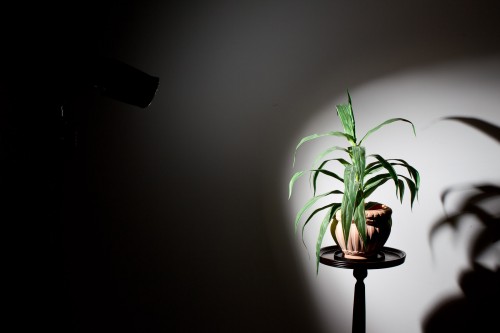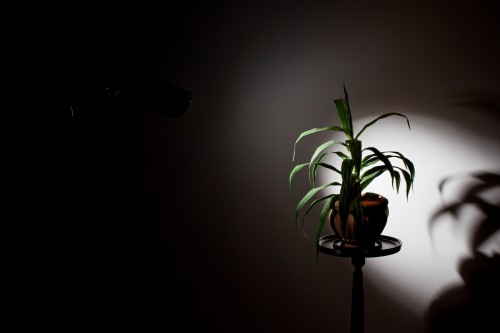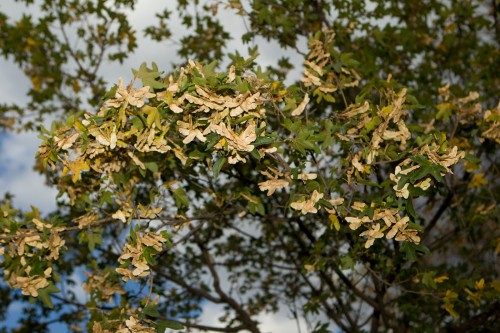When you are shooting with multiple lights in a studio-like setting, one of the most important things is to shape the light; to control where it goes. And the problem with a bare flash is that its light goes, well, pretty much everywhere.
And one of the most annoying of the “everywheres” is the background. If you want a darker background in a small basement studio, say, you have the following problem: your flash, even if it is a side flash, lights of the background, so you just cannot get a dark background. You get something like this:
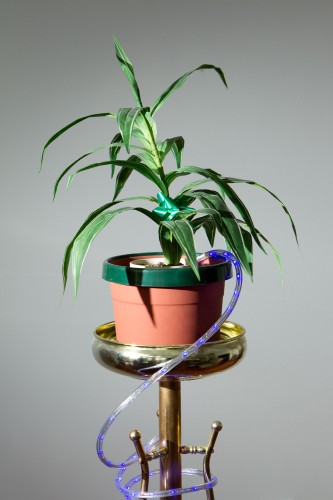
Darn, but you wanted a dark background!
In that case, you have three options:
- Move everything away from the background.
- Paint the background black.
- Direct the light more specifically.
Since options (1) and (2) are not always easy, I recommend you learn option (3). Use barn doors, or snoots, or gobos: anything to direct your lights more.
For small flashes, the grid is a fabulous option. A 1/4″ Honl Photo grid stuck onto the speed strap on the speedlight makes that picture into this:
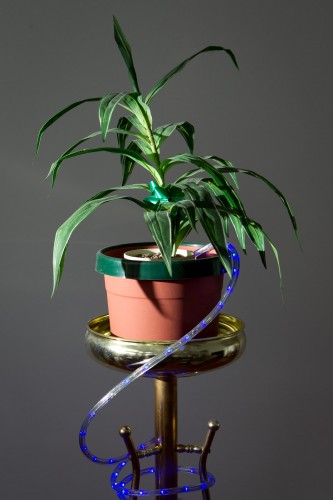
That was easy! The grid stops the light from going everywhere – now we have a much darker background, since light no longer falls onto it.
The Honl grid is affordable (I have several), small, and looks like this:
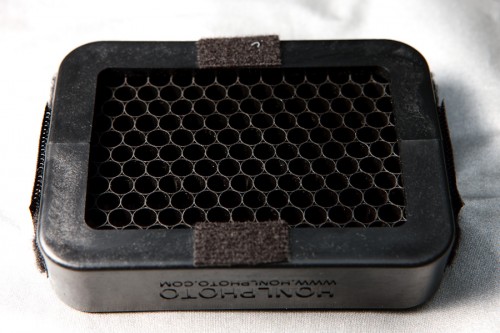
Honl Photo 1/4" Grid
Indispensable for users of off-camera flashes.
(As you may have read here by now, David Honl, the inventor of that range of Honl small flash modifiers, will be my Guest Star in Toronto on Saturday. Don’t miss it if you want to learn Advanced Flash from the pros.)

